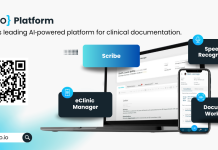Coca Rivas, Director of Design at dxw highlights the challenges that public sector organisations face when finding new ways to improve services
In this article, Coca explores how to design services that deliver greater efficiencies, not only for the staff managing them but also for the citizens who engage with the service.
The challenge of transforming services at scale
It’s often the larger inherited underperforming or disjointed services that hold organisations back. Usually built up over several years, these services will often have deeply ingrained problems that stem from changing policy, rules and regulations that have all impacted how the service has been shaped over time.
For organisations looking to transform these large-scale services, it’s best to start with an in-depth discovery exercise to kick off the design process and compartmentalise the existing service, breaking it down into its simplest form.
Once you have each element of the service laid out, you can then start to build an understanding of the user journey. From how the citizen interacts with the front end, to how employees behind the scenes use it. Understanding the user journey is vital when it comes to identifying the pain points and setting out goals and desired outcomes.
Continuity is key, there’s no room for interruption
The problem is that vital services can’t just be switched off while they are being developed, because they are serving citizens at all hours of the day. The Home Office, for example, works with multiple agencies and public bodies, including HM Passport Office, and is constantly reviewing and approving applications. Delivering digital transformation for these types of services must be done in a way that avoids disruption.
Transitioning a live service over to a new design architecture requires careful planning. It’s important that it happens smoothly and users can understand the value of the new design, whether that be enhanced features or a more robust platform. With a service that’s already live, this often needs a redesign to make it operate more efficiently, rather than a new build. This has the advantage of making the process more fluid, as familiarity with the system remains.
Cultural collaboration is paramount
In our experience of delivering these projects at scale, collaboration and communication are vital for success. As well as tasking multidisciplinary teams to lead the delivery, it’s about uniting the operational, customer and marketing teams to ensure communication is joined up.
Successful change is often more about people, than technology. Embedding the project team within the organisation will make the delivery more seamless. As will understanding the organisation’s culture and getting buy-in early on, particularly when you need to change mindsets. Keep communication open and encourage feedback during all stages of the process, as this will make those involved feel more valued.
Across any organisation, people hold different views about how good design and delivery happens. At scale, it takes the work of many different people to redesign a service. By approaching the process in this way, your service will deliver a greater impact for both your teams and the users who rely on it.
This piece was written and provided by Coca Rivas, Director of Design at dxw











